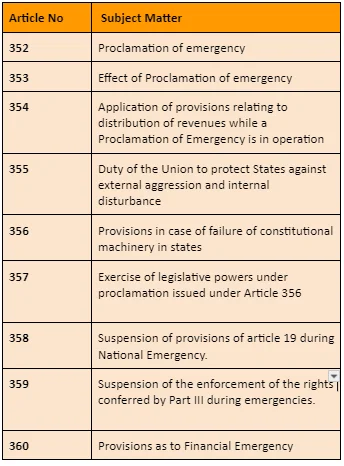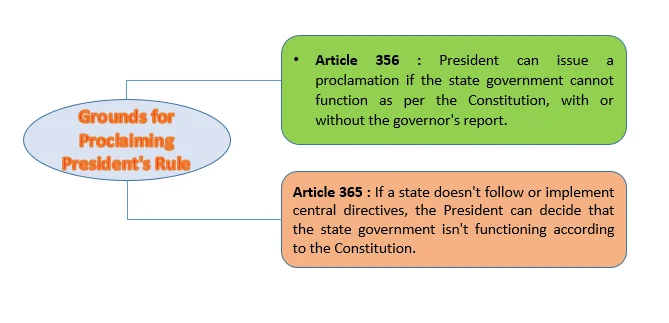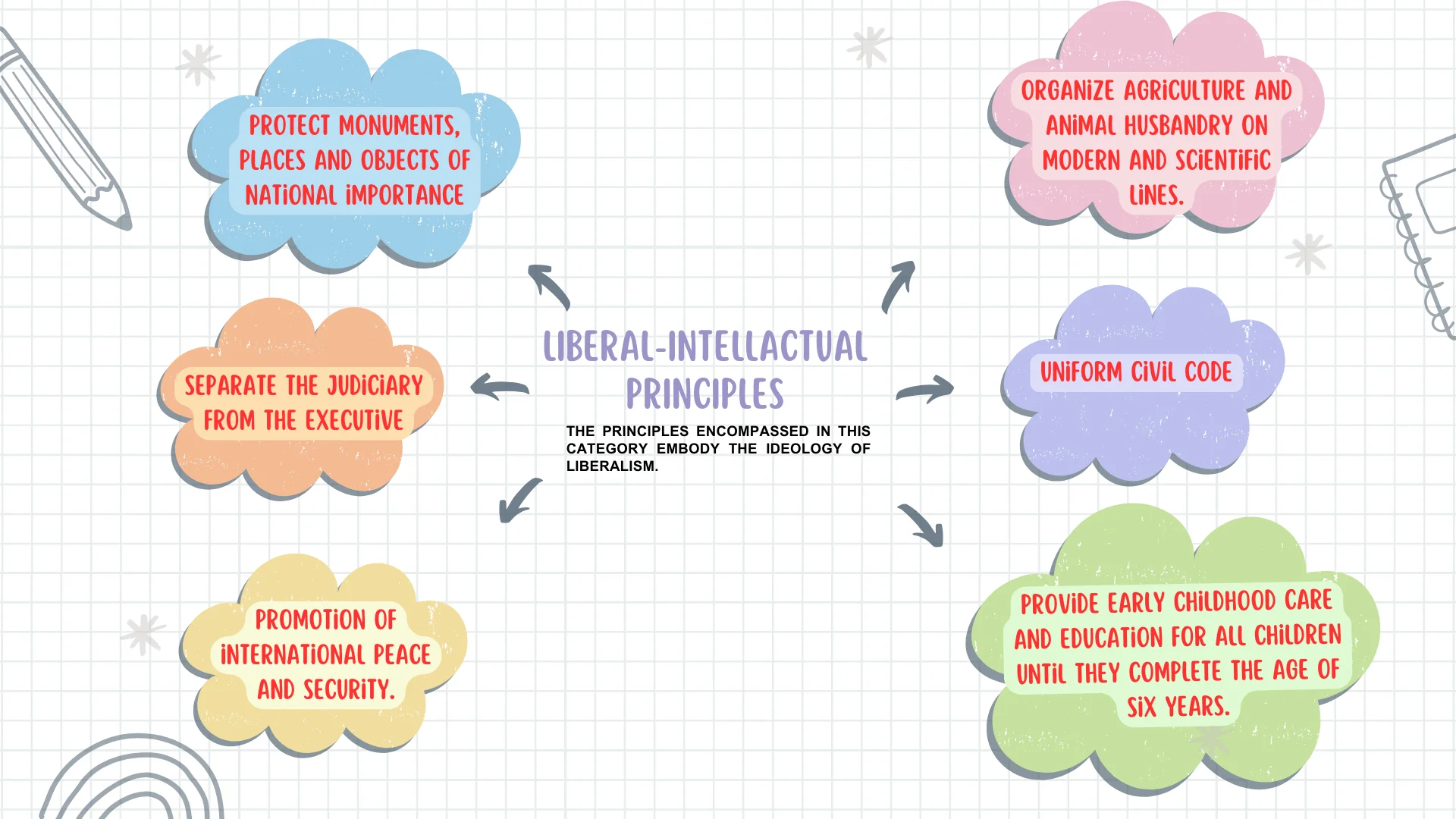Article 356, commonly known as President’s Rule, empowers the Centre to take over a state’s administration in case of a breakdown in its constitutional machinery. This provision aims to ensure that every state adheres to the Constitution and maintains law and order. Over time, President’s Rule has been a critical yet controversial aspect of Indian federalism, invoked over 125 times since 1950.
Understanding President’s Rule
Article 355
- President’s Rule and Article 355: Article 355 places a responsibility on the Centre to safeguard every state from external aggression and internal disturbances.
- It also ensures that the government of each state adheres to the provisions of the Constitution.
- When the Centre assumes governance of a state under Article 356 due to a breakdown in its constitutional machinery, it is commonly known as “President’s Rule”.
- This situation is also referred to as ‘State Emergency’ or ‘Constitutional Emergency.’
- However, the Constitution does not use the word ‘emergency’ for this situation.

Enroll now for UPSC Online Course
Grounds for Proclaiming President’s Rule (Article 356 and Article 365)
- Article 356: This article grants the President the authority to issue a proclamation if he is convinced that a situation has arisen in which the state’s government cannot function in accordance with the provisions of the Constitution.
- Importantly, the President can act on the report of the state’s Governor or independently, without the Governor’s report.
- Article 365: Article 365 stipulates that if a state fails to adhere to or implement directions issued by the Centre, the President is authorized to determine that a situation has arisen where the state’s government cannot operate in accordance with the Constitution.

Proclamation of President’s Rule – Approval and Duration
- Approval Process: A proclamation imposing President’s Rule must receive approval from both the Houses of Parliament within two months from its issuance.
-
-
- If the proclamation is issued when the Lok Sabha is dissolved or if its dissolution occurs within the two-month period without approval, the proclamation remains valid until 30 days from the first sitting of the Lok Sabha after its reconstitution, provided the Rajya Sabha approves it during this time.
-
- Continuation and Extension: If approved by both the Houses of Parliament, the President’s Rule continues for six months from the date of issue of the Proclamation.
-
-
- It can be extended for a maximum of three years with Parliament’s approval, renewed every six months.
- If the Lok Sabha dissolves during the six-month period without approving the extension, the proclamation remains in force until 30 days from the first sitting of the Lok Sabha after its reconstitution, provided the Rajya Sabha has meanwhile approved the continuation.
-
- Approval Mechanism: Resolutions approving the proclamation of President’s Rule or its continuation can be passed by either House of Parliament with a simple majority, meaning a majority of members present and voting.
- Restrictions on Extension:
-
-
- The 44th Amendment Act of 1978 introduced constraints on extending the President’s Rule beyond one year.
-
- To extend it beyond one year, the following conditions must be met:
-
-
-
- A proclamation of National Emergency should be in effect across India or in the concerned state.
- The Election Commission must certify that holding general elections for the state’s legislative assembly is not feasible due to difficulties.
-
-
- Revocation:
-
- The President can revoke a proclamation of President’s Rule at any time by issuing a subsequent proclamation, and this action does not necessitate parliamentary approval.

Effects of State Emergency
-
- Assumption of State Functions: The President, during President’s Rule, can assume the functions of the state government and the powers vested in the Governor or any other executive authority within the state.
- Legislative Powers: The President has the authority to declare that the powers of the state legislature are to be exercised by the Parliament.
- Suspension of Constitutional Provisions: The President can take any other essential steps, including the suspension of constitutional provisions related to any state body or authority.
- Implementation of President’s Rule:
-
-
- When the President’s Rule is imposed in a state, the President dismisses the state council of ministers led by the Chief Minister.
- The State Governor, acting on behalf of the President, manages the state administration with the assistance of the Chief Secretary of the state or advisors appointed by the President.
-
- Impact on Legislative Assemblies:
-
-
- A proclamation under Article 356 is commonly referred to as the imposition of ‘President’s Rule’ in a State.
- The President may suspend or dissolve the State Legislative Assembly.
- Supreme Court in SR Bommai case restricting this power said that till the time Parliament approves the President’s proclamation, he can only suspend the Legislative Assembly.
-
- Powers during Legislative Suspension(Article 357):
-
-
- Delegation of Law-Making: Article 357 empowers Parliament to confer on the President the power of the Legislature of the State to make laws.
- And to authorize the President to delegate, subject to such conditions as he may think fit to impose, the power so conferred to any other authority.
- Lawmaking Authority: The Parliament or, in the case of delegation, the President or the specified authority can create laws conferring powers and imposing duties on the Centre or its officers and authorities.
- Expenditure Authorization: The President, when the Lok Sabha is not in session, can authorize expenditure from the State consolidated fund.
- Delegation of Law-Making: Article 357 empowers Parliament to confer on the President the power of the Legislature of the State to make laws.
-
- Continuity of Laws: Laws enacted by the Parliament, President, or any specified authority remain in effect even after the President’s Rule.
-
-
- The duration of such laws is not tied to the proclamation period.
- State legislatures can repeal, amend, or re-enact these laws.
-
- Preservation of High Court’s Powers: The President cannot assume the powers of the concerned state High Court or suspend constitutional provisions related to it.
-
- The constitutional position, status, powers, and functions of the State High Court remain unchanged during the President’s Rule.
Historical Imposition of President’s Rule
- Frequency of Imposition: Since 1950, President’s Rule has been imposed on more than 125 occasions, making it a frequently used provision in the Constitution.
- Controversial Nature: Article 356 has been criticized and has become highly controversial due to its arbitrary use for political or personal reasons.
- Initial Imposition: President’s Rule was first imposed in Punjab in 1951. Subsequently, almost all states have experienced President’s Rule at least once.
- Supreme Court’s Rulings: The Supreme Court’s judgment in the Bommai case (1994) upheld the validity of the President’s Rule based on the ground that secularism is a ‘basic feature’ of the Constitution.
- However, the court did not endorse the imposition of President’s Rule in Nagaland in 1988, Karnataka in 1989, and Meghalaya in 1991.

Enroll now for UPSC Online Course
| Must Read | |
| Current Affairs | Editorial Analysis |
| Upsc Notes | Upsc Blogs |
| NCERT Notes | Free Main Answer Writing |
Conclusion
The use of the President’s Rule highlights the balance between maintaining constitutional order and respecting state autonomy.
- While it ensures governance continuity in states facing crises, its potential for misuse has sparked significant debate and judicial scrutiny.
- Ensuring fair and judicious application of Article 356 remains essential to uphold the democratic principles of India’s federal structure.
Sign up for the PWOnlyIAS Online Course by Physics Wallah and start your journey to IAS success today!
| Related Articles | |
| 2024 Lok Sabha Elections | Article 352: National Emergency in India |
| Features of Indian Constitution | President’s Rule: Article 356 Explained |

 GS Foundation
GS Foundation Optional Course
Optional Course Combo Courses
Combo Courses Degree Program
Degree Program









